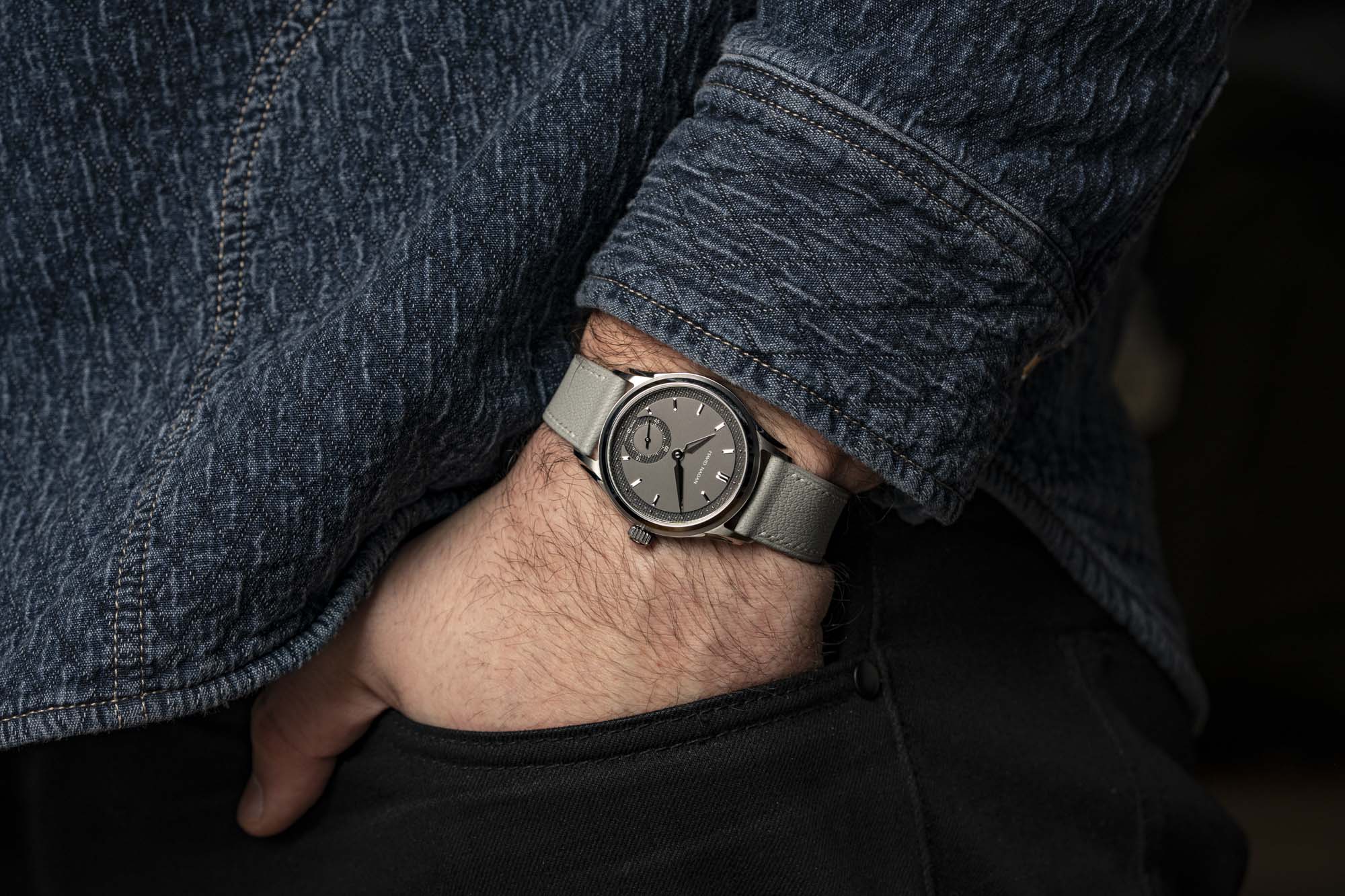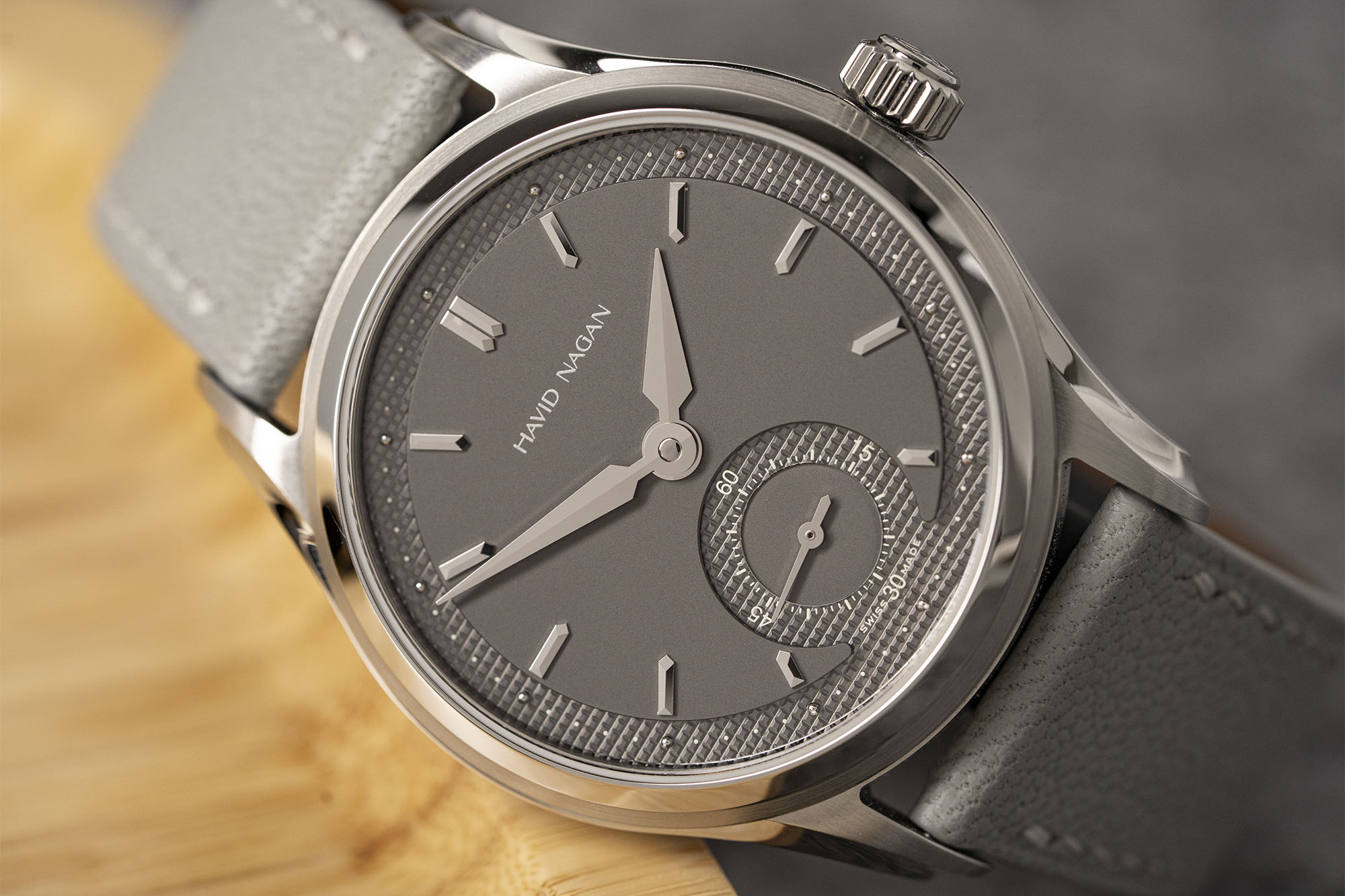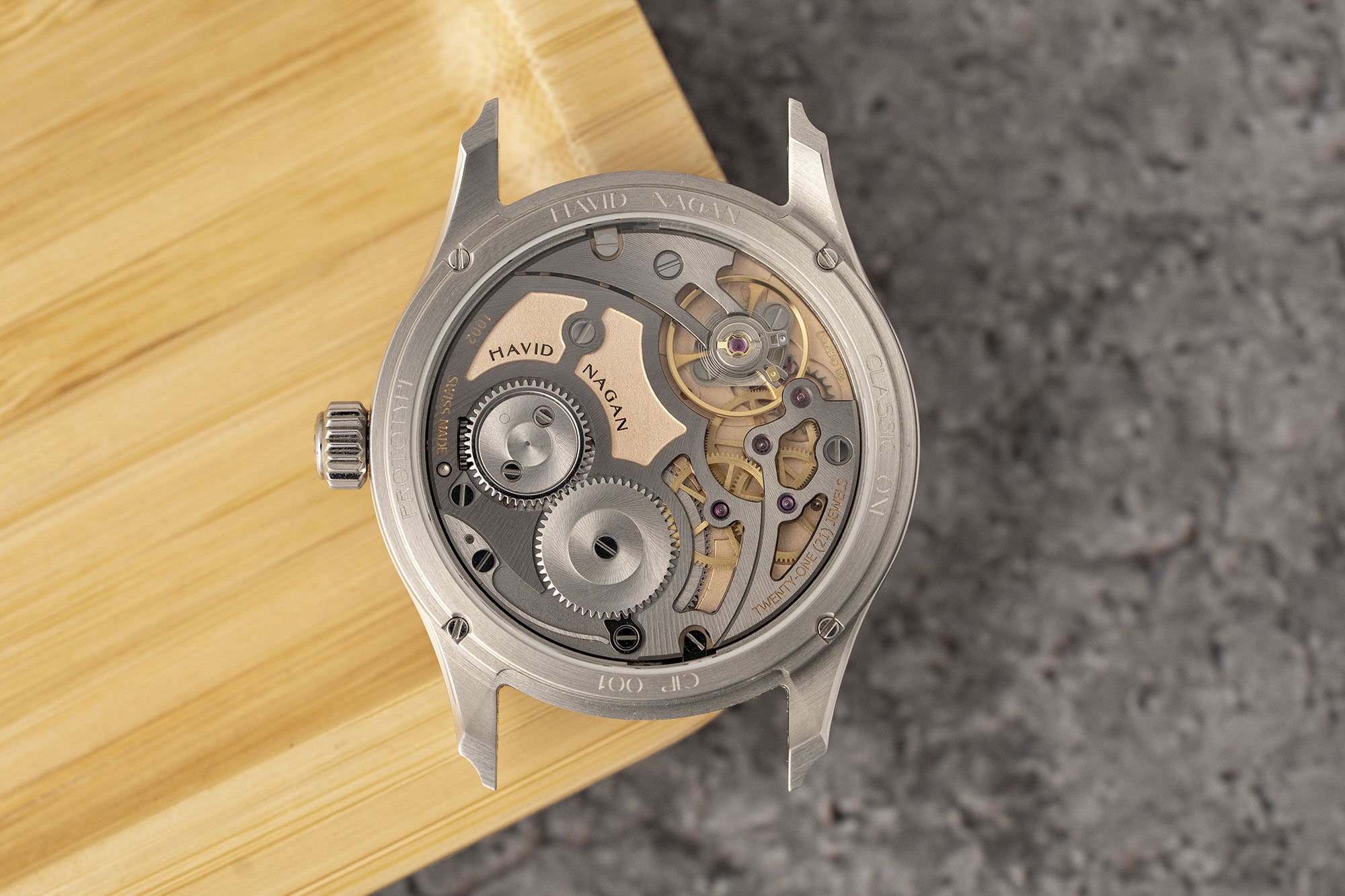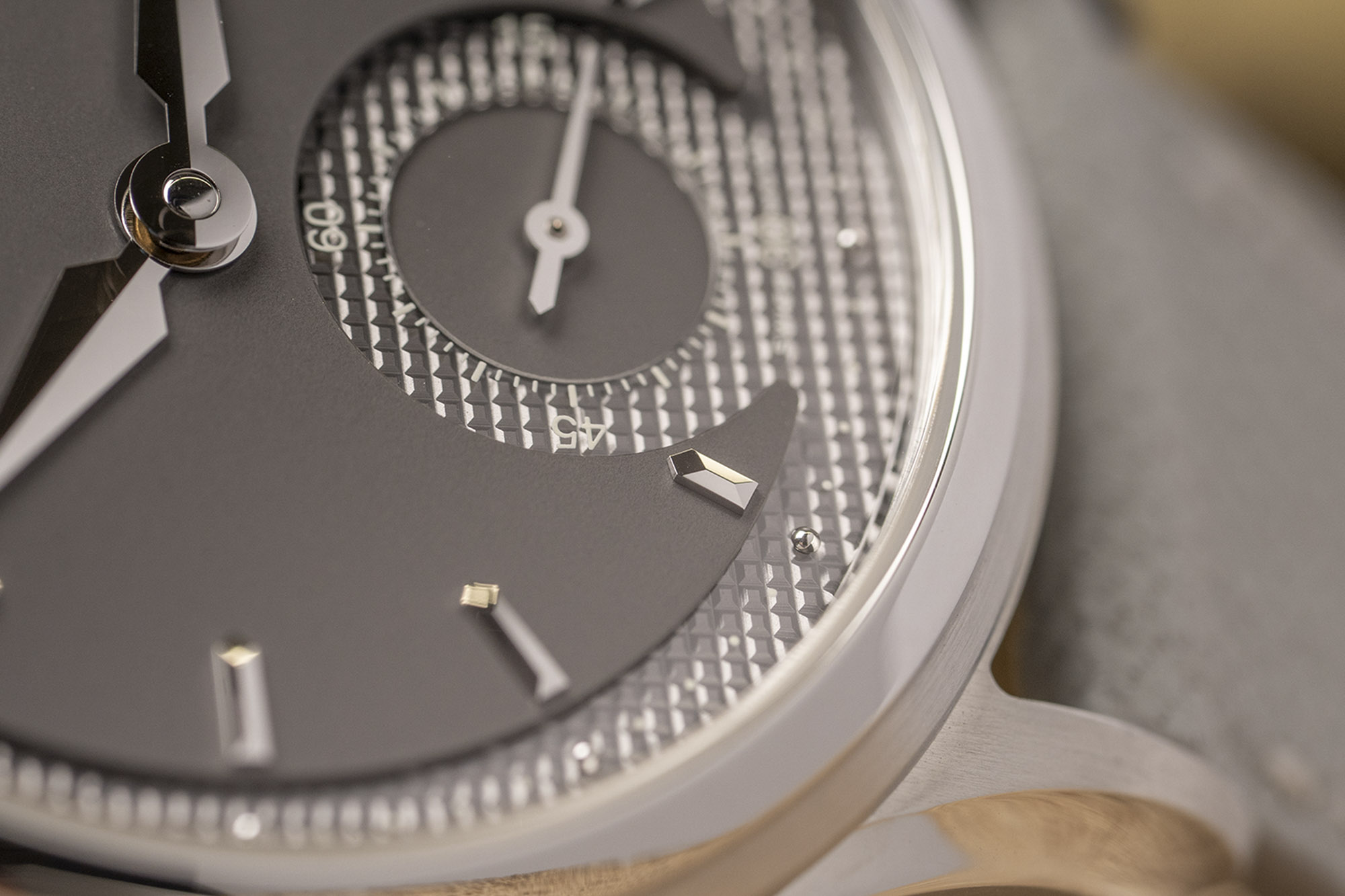Last year, one of the most intriguing watches I had a chance to handle was Havid Nagan’s debut, the HN00. I spent a few weeks with it right around the time brand founder Aren Bazerkanian was promoting his second release, the HN01. Now, another year later, and Havid Nagan is back with their third effort, the Classic One. The new naming convention speaks to just how different the Classic One is from its predecessors, and reflects the brand pivoting and changing in real time. In speaking with Bazerkanian, however, it’s clear that those shifts reflect a deep confidence in his own vision, and not merely commercial practicality.
“About two years ago, I found myself digging deeper and deeper into the vintage market,” Bazerkanian explained to me, when asked about the inspiration for the Classic One. “Namely, I was very interested in learning about vintage Patek 96 references, Urban Jurgensen, and Parmigiani Fleurier.” The Classic One, as the name implies, evokes classic dress watches like the ones mentioned by Bazerkanian, and many others. The 38mm case is just 9mm tall, making for an ideal wearing experience that isn’t exactly “vintage” in feel, but it’s adjacent to it. The case construction and finishing is very much that of a modern watch, with sharp transitions and clearly defined lines.
But it wasn’t just vintage watches on Bazerkanian’s mind when he set about to create the Classic One. “My wife and I had welcomed our daughter,” he told me, “and during the first 4-5 months, I’d gone into a very reminiscent state recalling memories of my own past. I remembered the feelings and moments as if I was reliving them and there was a certain nostalgia to it.”
Still, Bazerkanian is clearly aware that the Classic One and the brand at large will always be compared to other watches and brands, and he’s not shy about admitting that he thinks about this. “There is a fundamental question I always ask myself,” he told me, “‘How do I follow in the footsteps of my muses sincerely?’ Max Busser, Richard Mille, Francois-Paul, Jean-Claude Biver – these are brilliant and dedicated individuals, in their own rite, I study to guide me in my path.” One of the most complex things about making the Classic One, Bazerkanian told me, was finding the inspiration for a new model line without creating something that has nothing to do with his curiosities and tastes. So while on the surface the Classic One is very different from the first two HN references, there are through lines between all three references, at least from Bazerkanian’s perspective, which include the use of bold shapes, curves blended seamlessly with straight lines, and cases and dials that surprise with their light play.
The Classic One enters an extremely competitive market of “micro indies,” the types of brands we talk about frequently in these pages, that offer high end finishes and more exclusive movements, but might still source key components. The Classic One, largely because of its vintage watch inspiration, has a more generic appearance than the HN references, which featured a case that was a true original. If you’re shopping for a Classic One, you might also be considering watches by Laine, Sartory-Billard, Garrick, and other brands that offer a similar aesthetic and vibe but are still somewhat accessible, shy of mega-watch territory (the retail price of the Classic One starts at $9,000). Bazerkanian seems to understand this, and knows that informed collectors make decisions based on more than just the watch.
“There’s competition everywhere,” he told me. “Up, down, left, and right. I believe differentiation mitigates competition, and that is not limited to solely product.”
Something Bazerkanian has learned since launching his first watch is that he needs to do things as a brand owner that set Havid Nagan apart from the competition, and he spoke often of enthusiasts and the watch community as being the foundation of that understanding. “Where the real difference is made is community, in my opinion,” he told me. “Luxury is a bastardized word nowadays and is almost meaningless unless being used to describe the benefits that come alongside the physical product being transacted. Customer service, loyalty, trust, and community is what I do my best to focus on to make people feel like they’re getting more out of Havid Nagan.”
“There are the conglomerates that own a large chunk of the major players that collectors have been conditioned to seek and it’s hard for them to break away from,” Bazerkanian continued. “Obviously, that has changed in recent years with the rise of the independents, but the dynamic is still there. The dynamic the large conglomerates can’t seem to escape is they are commercial animals. Their brand equity is strong and has staying power so it seems that their business model is still working but I would argue that shifts gradually, then all at once, with the newer generations of collectors.”
It certainly would appear that collectors, particularly those who are relatively new to the watch world, are more likely than ever to consider independent brands and makers over large, corporate owned brands. But it’s a tough nut to crack, and Bazerkanian is aware that he can’t bank on overnight success. One of his biggest inspirations (he’s referenced more than any other watchmaker or brand in our correspondence) is F.P. Journe, who he points out gained credibility over the course of many years, and without spending a fortune on marketing. “Francois-Paul has been doing what he’s been doing for 25 years with little to no marketing budget and no master plan of attracting a new collector base,” he told me. “What happened was the market shifted. Auction houses, WatchBox, editorials, etc. finally realized there was an underappreciated value in the brand. That is proof of concept that following our passions, visions, and remaining genuine in our endeavors will eventually lead to the ‘promised land.’”
Believing that F.P. Journe’s success is proof of concept that your own indie brand can succeed is, charitably, a sign of great confidence. That’s particularly true when one considers the inescapable fact that Journe is, of course, a highly trained and once-in-a-generation talent as a watchmaker, and the Havid Nagan model relies on the old établissage model, in which the various components of a watch are sourced from suppliers and eventually assembled into a final product. That’s not a slight on Havid Nagan – this is a Swiss watchmaking tradition that goes back hundreds of years, long before the idea of “in-house” or vertical integration was meaningful to consumers or anyone else. It’s also what allows Havid Nagan to make the impressive watch they’ve wound up with in the Classic One. Sourcing components is a bit of an art unto itself, and the way the multi-layer, guilloche dial comes together with the case is not a happy accident.
One such component, and perhaps the one that is this watch’s secret weapon, is the AMT6600 movement. The caliber is made by AMT Manufacture, a division of Sellita that only works on higher end, custom designs. It represents a real investment by Bazerkanian into his brand – purchasing any number of custom spec movements by AMT is going to be considerably less cost effective than buying calibers off the shelf. But it’s a key factor in providing the experience he’s after. The AMT6600 is manually wound, and offers over 60 hours of power reserve. More import, perhaps, is that Bazerkanian was able to achieve, one would imagine, the exact aesthetic he was going after through AMT. The movement’s finishing is impressive, with polished screws, skeletonized, ruthenium coated bridges, and a mainplate with a hammered gold finish. It also nicely fills the case, and is chronometer certified by the COSC.
The dial, too, is very impressive, and perhaps moreso once you fully understand what you’re looking at. The guilloche base is covered by brass center section that accents the guilloche work at the dial’s perimeter and in the subsidiary seconds dial. The outer minute ring and subdial indices hover over the guilloche surface via a transparent sapphire ring. This is a notably modern manufacturing technique applied to a design language that is rooted in the classics, and probably the most interesting little detail about the watch, in my opinion. Because of the multiple layers at play, the owner can expect to view a variety of shadows cast on the guilloche section throughout the day – a small reminder of the dial’s complexity.
You will not be surprised to learn that Bazerkanian apparently has zero interest in spending too much of his focus on the Classic One for too long. When I asked him about his future plans for the brand, he surprised me by letting me know he has a multi-year strategy that extends over a decade into the future. “I have 15 years’ worth of releases already planned,” he told me. Again, the confidence is truly impressive. More to the point, he seems to have clarified his vision about what Havid Nagan is, moving forward.
“I recently came to a decision that would fundamentally change the dynamic of the company,” he explained. “Initially, I thought placing Havid Nagan in the middle-tier of the market was the best decision and would offer collectors from the lower ranges something to aspire to and collectors from the higher end something fun to add to their collection. What I think resulted instead is I’m asking for the lower ranges to reach up and the higher ranges to reach down. Why not give each what they want?” As a sort of middle ground, Bazerkanian plans to offer watches at two distinct price points, not dissimilar from what brands like MING are doing with watches that are squarely in “approachable enthusiast” territory while others have a more “no compromises” approach.
“Moving forward,” he says, “the plan is to debut one ‘entry-level’ piece around the $5,000-$6,000 range that will offer supreme value within the price category and one limited novelty that will feature higher end finishing, complications, etc. in the $20,000 range.” Havid Nagan
The post The Story Behind the Havid Nagan Classic One with Founder Aren Bazerkanian appeared first on Worn & Wound.








